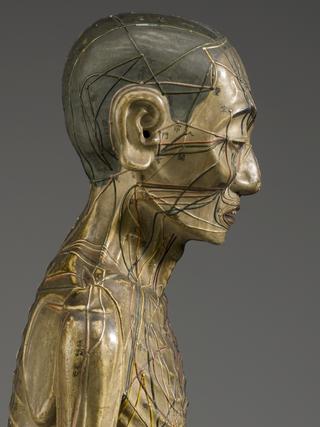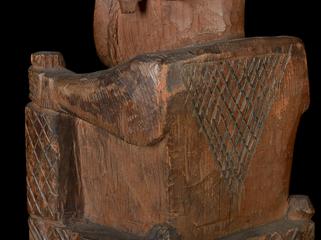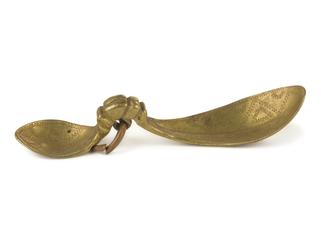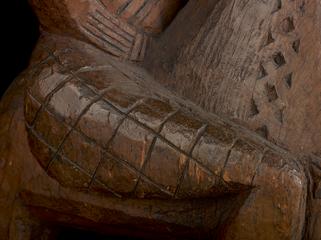Sectarian body stamp, India, 1801-1900
Sectarian body stamp (‘cchapa’), one of fifty-eight, related to two engraved brass plaques, potentially yantras, and a shallow brass dish depicting Lord Vishnu’s footprint (Vishnupada), from India, potentially Bengal, 1801-1900. Used by devotees of the Hindu deity Vishnu and pilgrims to prepare for worship, each stamp bears either script or symbols relating to Vishnu such as the conch and the lotus
More
According to Utracht (‘Traditional Jewelry of India’, Thames & Hudson, 1997, p.25) stamps like these are dipped into a paste of sandalwood and applied to forehead, cheeks, shoulders, forearms or stomach after the devotee has undergone a purifying bath. The marks on the body provide a visual display of the devotee’s belief and are thought to transfer the beneficence of the deity to the wearer





